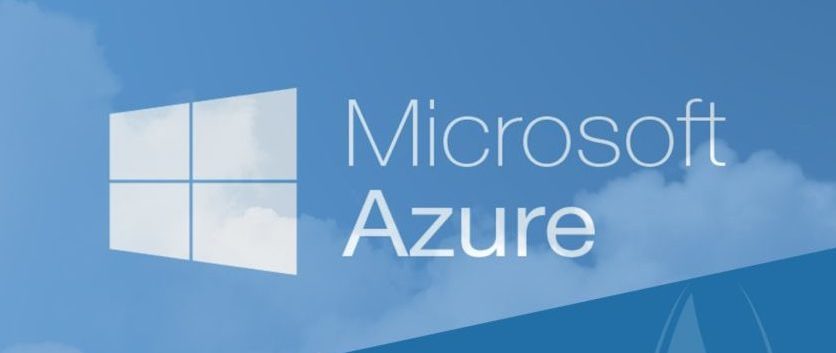M+E Daily

Azure EVP Eyes Post-Pandemic ‘Hybrid Environment,’ Growth Opportunities
Story Highlights
In a wide-ranging discussion with an analyst at the online Morgan Stanley Technology, Media and Telecom Conference March 1, Jason Zander, EVP of Azure at Microsoft, touched on the future of cloud architectures post-pandemic, Azure growth opportunities and the company’s green goals.
Asked if he expects fundamental changes in the way people will be thinking about their cloud architectures following COVID-19, he said: “I think it’s going to be a hybrid environment.”
And Microsoft is entirely prepared for that, he explained: “That’s been one of the tenets of our design since the beginning of Azure. There were cases where other cloud companies, when they” discussed hybrid cloud, “that usually meant migration.” However, “in our case, we meant, no, you’re going to have on-premises and edge, and you’re going to have the public cloud. You want a combination of both. I think that’s actually been cemented.”
Looking at the issue “from a competitive perspective,” he said, “you’re starting to see even companies that” Azure competes with “now start to produce what you actually call real hybrid solutions,” he said, noting: “The benefit for us is we have been doing it since day one, so we’ve got a very rich product portfolio that supports that going forward.”
When the pandemic started, companies that were “already on a cloud path were able to react to that very quickly, oftentimes in days as opposed to what might have been months if you didn’t have a plan in place for that,” he also pointed out. When it comes to digital transformations, there were teams that realized they “did something in two weeks that [they] had originally planned to go spend the next year on,” he noted.
Prior to the pandemic, there was a “big trend of people moving from their data centers into public cloud [and] that, of course, continues,” he pointed out, adding: “I would say some of the big areas we’re seeing in terms of changes now [are] a lot more focus around data and analytics – basically how do I unlock all of the data silos that are out there, get more understanding of it, get some insights to stay competitive? That one’s super important. We’re also seeing a whole bunch of adoption across areas like” the Internet of Things (IoT).
AI and ML
Artificial intelligence (AI) and machine learning (ML) “continues to be a hot trend” also, Zander pointed out.
On that front, Azure wants to “make sure that, first and foremost, we have the best possible infrastructure for anyone that wants to run AI,” he said. To that end, “we have a deep partnership with OpenAI, and they’re doing some of the most advanced AI research anywhere out there,” he noted.
Azure has also “integrated a lot of the AI into our” Software-as-a-Service (SaaS) applications, he said, explaining: “It analyzes your code as you’re running, compares it to a whole bunch of code that’s been analyzed and tells you when you could have written better, cleaner, safer code, which is really freaking amazing.”
Microsoft’s “R&D efforts around AI are massive, the work we do with OpenAI [being] just one example” and the holographic processing unit in the HoloLens mixed reality smarty glasses being another example, he said.
Growth Opportunities
Moving on to growth opportunities, Zander conceded: “There’s still a whole bunch of work that’s in front of us and the industry with respect to making the shift into our hyperscale data centers.”
There are a “whole bunch of data center deals we’re doing,” he also said, adding: “I really do think that data and analytics is probably one of the biggest ones that is popping right now as we speak. There’s a need for people to be able to break down data silos.”
Although the technology for that has “been out there,” he said: “I think we now have just awesome solutions with Azure Synapse, Azure Purview [and] Cosmos DB…. That’s a huge area of addressable revenue as we speak.” Azure Kubernetes Service presents another “great opportunity,” he went on to say.
Green Goals
Microsoft’s “stated goal is to be carbon negative by 2030,” Zander noted. There are already areas of the world, especially if you look at the Nordic countries, where renewable energy “is the energy system,” he pointed out.
Microsoft is “trying to take a very deliberate approach, and we recognize that you need a balance of all of these things, and we also need to help the world get to where it needs to be,” he said. “We also hope to be a partner with folks that are generating the energy systems we use today but also innovating in sustainable solutions that we’ll be using tomorrow,” he noted.
Microsoft also wants to “help companies that today may have a big carbon footprint figure out ways through IoT, technology, carbon capture – whatever the tech is – figure out how we can actually reduce that and then have them also be part of” the environmental, social and corporate governance (ESG) “solutions that are out there,” he said.
He concluded: “If you do it right, I think we can actually balance this all out…. No one extreme is just going to win. It’s going to have to be a balance of some pretty practical stuff if you want to pull it off.”









